An Airbnb House Rules PDF is a digital solution for hosts to streamline communication, ensuring clarity and accessibility. Inspired by templates and platforms like GuestManual, it offers a professional, easily updatable format for outlining expectations, enhancing guest experiences, and maintaining property standards effectively.
1.1 What Are Airbnb House Rules?
Airbnb house rules are guidelines set by hosts to ensure a smooth and enjoyable experience for both guests and property owners. These rules outline expectations for guest behavior, such as check-in and check-out times, noise levels, and respect for the property. They also cover essential details like maximum occupancy, smoking policies, and pet allowances. By creating a clear and concise set of rules, hosts can protect their property, minimize potential issues, and provide guests with a professional and organized reference. A well-structured Airbnb House Rules PDF ensures that all expectations are communicated effectively, fostering a positive and respectful stay for everyone involved.
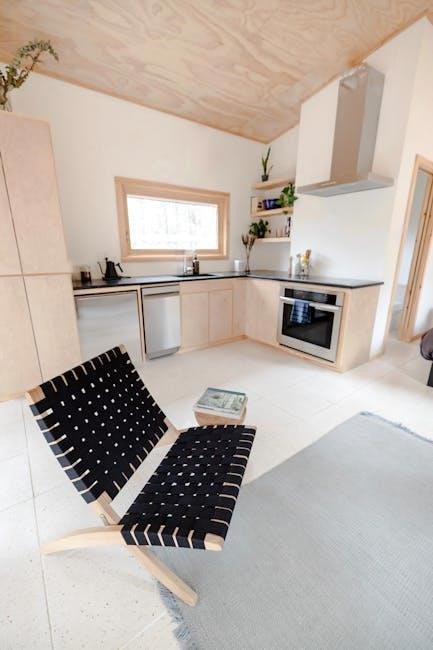
1.2 Importance of Having Clear House Rules
Clear house rules are essential for maintaining order, protecting your property, and ensuring a positive experience for both hosts and guests. They set expectations upfront, reducing misunderstandings and potential conflicts. By outlining specific guidelines, hosts can safeguard their property from damage and ensure compliance with local regulations. Additionally, well-defined rules help guests feel secure and informed, leading to better reviews and repeat bookings. A structured Airbnb House Rules PDF also serves as a legal document, providing clarity on responsibilities and liabilities. This professionalism fosters trust and respect, making it a vital tool for any successful short-term rental business.
1.3 Purpose of an Airbnb House Rules PDF
The primary purpose of an Airbnb House Rules PDF is to provide a comprehensive, accessible guide for guests, ensuring they understand their responsibilities and your property’s expectations. It serves as a centralized document that outlines essential information, from check-in procedures to safety protocols, reducing the need for multiple communications. A well-designed PDF enhances the guest experience by offering clarity and convenience, while also protecting the host by documenting clear guidelines. This format allows for easy updates and personalization, making it adaptable to different properties and evolving needs. Ultimately, it streamlines communication, fostering a smooth and stress-free experience for both hosts and guests.

Creating Effective Airbnb House Rules
Creating effective Airbnb house rules involves balancing guest comfort with property protection. Use clear, concise language and consider templates to streamline communication and set expectations.
2.1 General Guidelines for House Rules
When crafting house rules, prioritize clarity and conciseness to ensure guests understand expectations. Start with essential topics like check-in/check-out times, noise levels, and smoking policies. Clearly outline guest etiquette, such as respect for shared spaces and neighbors. Include safety measures, like fire extinguisher locations, and emergency contact details. Also, address property-specific rules, such as pet policies or appliance usage. Use simple, direct language to avoid confusion and ensure compliance. Regularly review and update your rules to reflect changing needs or local regulations. By maintaining a balance between guest comfort and property protection, you create a fair and respectful environment for everyone.
2.2 Specific Rules for Different Types of Properties
When creating house rules, consider the specific needs of your property type. Vacation homes may require rules about pool usage, outdoor equipment, or seasonal decorations. City apartments might focus on noise levels, waste disposal, and shared spaces. Unique properties, such as boats or treehouses, may need specialized instructions for safety, guest behavior, and equipment operation. Tailoring rules to your property ensures clarity and helps prevent misunderstandings. By addressing unique aspects of your space, you can better protect it and provide guests with a seamless experience. Specific rules also enhance guest satisfaction by setting clear expectations. Always adapt rules to reflect the property’s features and local regulations for maximum effectiveness and compliance.
2.3 Tips for Writing Clear and Concise House Rules
Writing clear and concise house rules is essential for effective communication with guests. Use simple, straightforward language to avoid confusion. Organize rules into logical sections, such as check-in, cleanliness, and noise levels. Avoid overly restrictive or overly broad statements—be specific. Include bullet points or numbered lists for easy readability. Ensure rules are consistent with your property’s unique features and local regulations. Avoid using jargon or overly technical terms. Regularly review and update your rules to reflect changes in your property or local laws. A clear, well-structured set of rules helps guests understand expectations, reducing misunderstandings and ensuring a smoother experience for everyone.
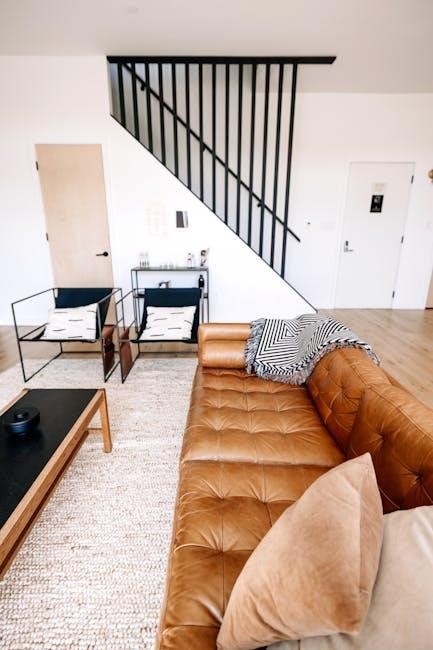
Airbnb House Rules PDF Template
An Airbnb House Rules PDF Template provides a structured format for hosts to outline expectations, procedures, and property-specific details. It ensures consistency and professionalism in communication.
3.1 Why Use a PDF Format for House Rules?
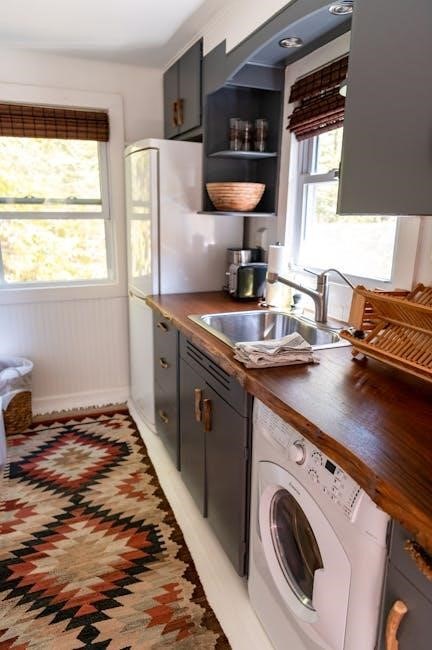
Using a PDF format for Airbnb house rules offers numerous benefits. PDFs are universally accessible, ensuring guests can open and read them on any device without compatibility issues. They also maintain consistent formatting, preserving the layout and design you intended. PDFs are easily shareable via email, messaging platforms, or hosting platforms, making distribution simple. Additionally, PDFs can be password-protected for security, preventing unauthorized edits. They also provide a professional and polished appearance, enhancing your credibility as a host. Finally, PDFs are searchable, allowing guests to quickly find specific information. Overall, PDFs are a practical and efficient choice for presenting house rules clearly and effectively.
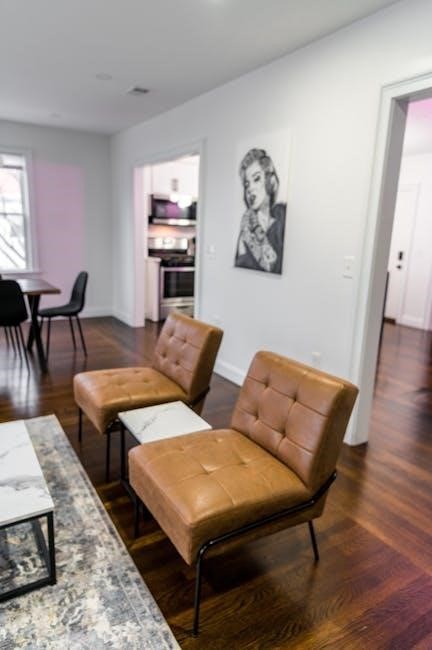
3.2 How to Create a Digital House Rules PDF
To create a digital house rules PDF, start by drafting your content using a word processor like Microsoft Word or Google Docs. Ensure your rules are clear and organized into sections such as check-in procedures, guest etiquette, and safety guidelines. Use a clean, professional design with bullet points and headings for readability. Once finalized, export the document as a PDF to preserve formatting. Optimize the file for mobile devices to ensure guests can access it easily. Consider adding a password for security. Finally, share the PDF via Airbnb’s messaging system or email, and update it regularly to reflect any changes in rules or property details.
3.3 Best Practices for Designing a House Rules PDF
When designing a house rules PDF, prioritize clarity and readability. Use a clean, professional layout with clear headings and bullet points to make the information easy to scan. Ensure the text is large enough for mobile viewing and the design is responsive. Incorporate simple icons next to section headings for visual appeal. Avoid overly restrictive rules and keep the language straightforward to prevent legal issues. Regularly update the document to reflect any changes in rules or property details. Test the PDF on different devices to ensure compatibility and maintain a consistent format across all sections. This approach ensures your house rules are both effective and visually appealing, enhancing guest understanding and compliance.
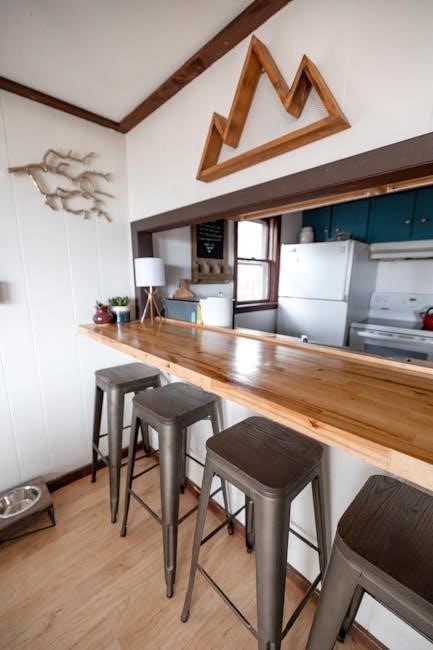
Essential Sections to Include in Your House Rules PDF
Your house rules PDF should include key sections like check-in/check-out procedures, guest etiquette, safety guidelines, and a Q&A section to address common concerns and ensure clarity.
4.1 Check-In and Check-Out Procedures
Clearly outline check-in and check-out times to avoid confusion. Specify how keys will be handed over, such as through a lockbox, smart lock, or in-person. Include detailed arrival instructions, like parking details or access codes. For departure, mention expectations like trash disposal, securing the property, and returning keys. Consider adding a grace period for late check-outs if applicable. Tailor these rules to your property type, such as apartment complexes or vacation homes. Ensure guests understand their responsibilities upon arrival and departure to maintain a smooth experience for both parties. Providing contact information for assistance during check-in is also recommended.
4.2 Guest Etiquette and Behavior Expectations
Establishing clear expectations for guest behavior ensures mutual respect and a pleasant stay. Specify noise levels, especially during late hours, to maintain peace for neighbors. Include rules about cleanliness, such as disposing of trash properly and keeping common areas tidy. Mention respect for shared spaces and belongings. If applicable, outline policies for hosting gatherings or parties. Encourage guests to report damages promptly and treat the property as they would their own. Reminding guests to lock doors and windows when leaving is also essential for security. These guidelines help create a considerate and responsible environment for everyone involved. Clear communication fosters a positive experience for both hosts and guests.
4.3 Safety and Emergency Procedures
Ensuring guest safety is paramount. Clearly outline emergency exit routes and the location of fire extinguishers and smoke detectors. Provide instructions on how to use these devices. Include information about the first aid kit and its location. List emergency contact numbers, such as local authorities, hospitals, and your personal contact details. Specify procedures for specific emergencies like earthquakes or floods, depending on the property’s location. Advise guests on handling gas leaks or electrical issues and whom to contact. Remind them to secure doors and windows before leaving or sleeping. These guidelines help prevent accidents and ensure preparedness in critical situations, fostering a safe environment for all guests. Clarity is key to effective emergency response.
Legal Considerations for Airbnb House Rules
Understand liability, comply with local laws, and ensure rules are enforceable without discriminating. Clear guidelines protect hosts and guests, minimizing legal disputes and ensuring safety. Adhere strictly.
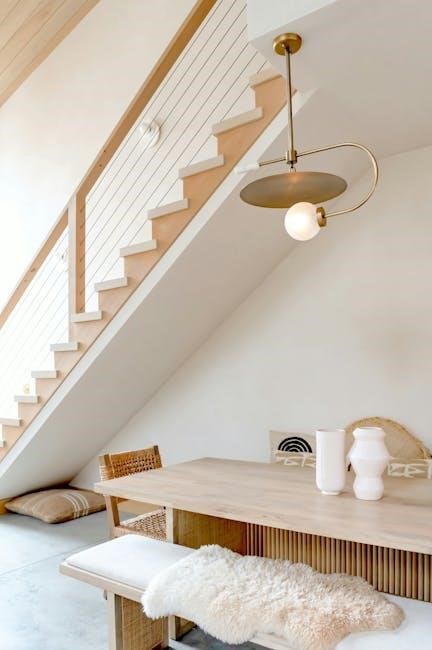
5.1 Understanding Liability and Responsibilities
Understanding liability and responsibilities is crucial when creating Airbnb house rules. Hosts must ensure compliance with local laws and maintain a safe environment for guests. Liability concerns may arise from property damage or injuries. Guests are expected to abide by the rules and report any issues promptly. Clear communication of responsibilities in the house rules PDF helps protect both parties. Hosts should outline their duties, such as providing essential amenities and ensuring proper maintenance. Guests must agree to respect the property, avoid reckless behavior, and adhere to occupancy limits. This mutual understanding reduces potential disputes and legal risks, fostering a positive experience for all involved. A well-drafted PDF ensures transparency and accountability.
5.2 Compliance with Local Laws and Regulations
Compliance with local laws and regulations is essential when drafting Airbnb house rules. Hosts must ensure their property meets all legal requirements, including permits, licenses, and health codes. Guests must also adhere to local rules, such as noise ordinances or waste disposal guidelines. Failure to comply can result in fines or legal action. Hosts should research and outline any specific local regulations in their house rules PDF. This includes maximum occupancy limits, parking restrictions, and any mandatory safety measures; By incorporating these details, hosts demonstrate responsibility and help guests avoid unintentional violations. Staying informed and updated on local laws ensures a lawful and stress-free experience for both parties. Clear communication is key to maintaining compliance.
5.3 How to Enforce House Rules Legally
To legally enforce Airbnb house rules, hosts must ensure they are clear, fair, and legally binding. Include the rules in the rental agreement and have guests acknowledge them upon booking. Specify consequences for violations, such as forfeiture of deposits or early termination of the stay. Document all interactions and maintain records of rule breaches. If disputes arise, hosts can seek mediation or legal advice. Always follow local laws regarding tenant rights and eviction procedures. By creating a legally sound framework, hosts can protect their property and ensure guests adhere to the rules without facing legal repercussions.
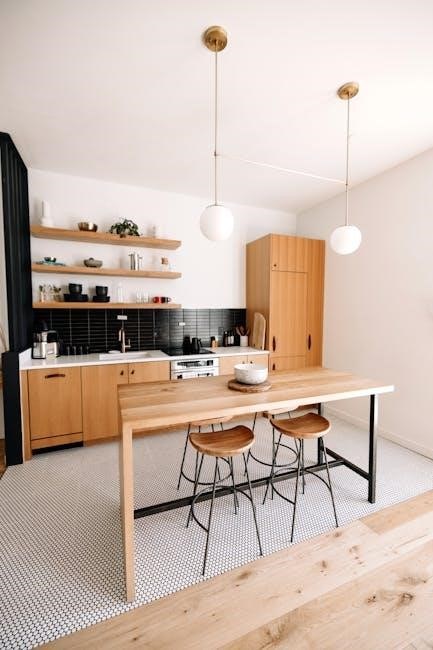
Examples of Airbnb House Rules PDF
Examples of Airbnb House Rules PDFs include vacation homes, city apartments, and unique properties; Each provides tailored rules specific to the property, ensuring clarity and relevance for guests.
6.1 Sample House Rules for Vacation Homes
Sample house rules for vacation homes often include specific guidelines tailored to the property type; Common rules might cover check-in/check-out times, noise levels, and trash disposal. Guests may be asked to respect outdoor spaces, such as pools or grills, and to report any damages promptly. Some hosts include rules about maximum occupancy, pet policies, and smoking restrictions. Additionally, rules may address local regulations, like quiet hours or beachfront debris cleanup. These examples provide a clear framework for guests to enjoy the property responsibly while preserving the home for future visitors.
6.2 Sample House Rules for City Apartments
Sample house rules for city apartments often focus on noise levels, shared spaces, and building-specific guidelines. Common rules include quiet hours (e.g., 10 PM to 8 AM), proper use of elevators, and no holding open of building doors. Guests may be asked to dispose of trash in designated areas and avoid leaving personal items in common spaces. Rules may also address maximum occupancy, prohibited parties, and restrictions on smoking or candles. Some hosts include specifics about parking, visitor policies, and respecting neighbors. These examples help maintain harmony in densely populated areas while ensuring the apartment remains clean and secure for future guests.
6.3 Sample House Rules for Unique Properties
Sample house rules for unique properties, such as treehouses, yurts, or houseboats, often include specialized instructions tailored to the property’s distinct features. For instance, a treehouse might require guests to avoid climbing at night or using certain equipment without supervision. A yurt might specify rules for handling propane heaters or proper waste disposal. Houseboats may include guidelines for water usage, anchoring, or operating the vessel safely. These examples emphasize safety, preservation of the property, and respect for the environment. Hosts often add specific check-in times for unique properties due to access challenges or weather sensitivity. Clear, concise rules help guests enjoy the space responsibly while ensuring the property remains intact for future stays.
Tools and Resources for Creating House Rules PDF
Explore tools and resources for creating a clear Airbnb House Rules PDF, including templates, editors, and platforms to enhance guest communication and property management effectively.
7.1 Free Templates for Airbnb House Rules
Access a variety of free templates designed to help hosts create comprehensive Airbnb House Rules PDFs. These templates are customizable to suit different property types and include sections for check-in procedures, guest etiquette, and safety guidelines. Many templates are available online, offering a professional and organized format that ensures clarity and consistency. They often feature editable fields, allowing hosts to personalize rules based on their specific needs. Platforms like Canva, Google Docs, and Airbnb-specific websites provide these resources, making it easy for hosts to establish clear expectations for guests. Using these templates saves time and ensures that all essential information is covered effectively.
7.2 Platforms for Digital House Manuals
Digital house manuals are essential for streamlining communication with guests, and several platforms offer tools to create and manage them. Platforms like Guesty, Hostfully, and Smoobu provide hosts with templates and features to design digital house manuals. These platforms allow hosts to create customizable guides, including check-in instructions, appliance usage, and local recommendations. Many platforms integrate with property management systems, enabling real-time updates and seamless sharing with guests. They also offer features like interactive maps and multimedia content to enhance the guest experience. By using these platforms, hosts can ensure their house rules and property information are clear, accessible, and professionally presented, leading to better guest satisfaction and reviews.
Creating an Airbnb House Rules PDF is essential for enhancing guest experiences and protecting properties. Clear rules ensure smooth stays and foster positive host-guest relationships.
8.1 The Future of Airbnb House Rules
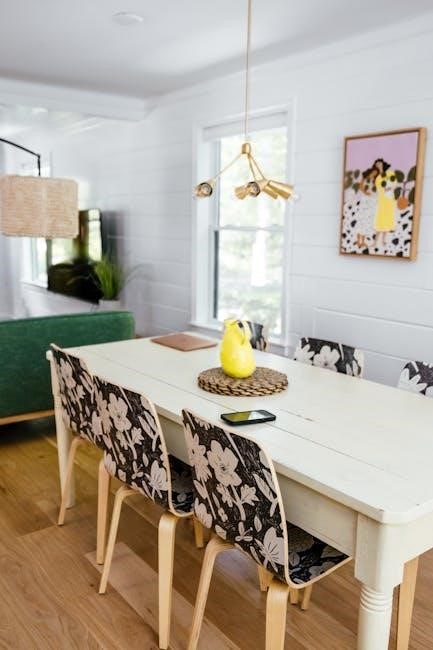
The future of Airbnb house rules lies in their digital evolution and personalization. As technology advances, hosts may adopt smart home integrations, automated rule enforcement, and real-time updates. Guests will expect seamless digital access to house rules via PDFs or apps. Sustainability-focused rules, such as energy-saving practices, may become standard. Additionally, hosts could leverage AI to tailor rules based on property type, location, or guest preferences. This dynamic approach ensures clarity, compliance, and enhanced guest experiences while addressing evolving legal and cultural expectations. The integration of multimedia, like videos or interactive guides, could further enhance understanding and adherence to house rules.
8.2 Final Tips for Hosts
When crafting your Airbnb house rules PDF, prioritize clarity and specificity to avoid misunderstandings. Ensure rules are tailored to your property type, whether it’s a vacation home, city apartment, or unique space. Use a professional tone while maintaining a welcoming vibe to build trust with guests. Regularly update your rules to reflect changing laws, seasonal considerations, or property-specific needs. Consider including a section for guest signatures to confirm agreement. Finally, be approachable and open to questions, fostering a positive experience. By doing so, you protect your property and enhance guest satisfaction, ensuring a smooth and enjoyable stay for everyone.

